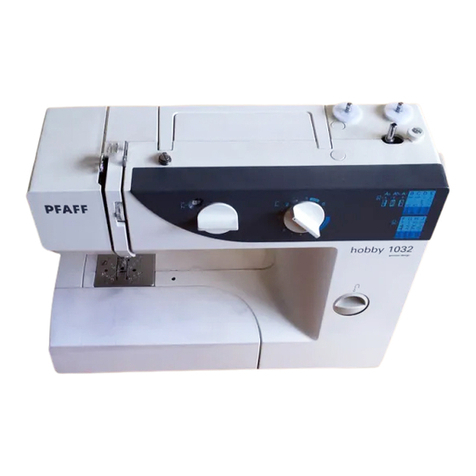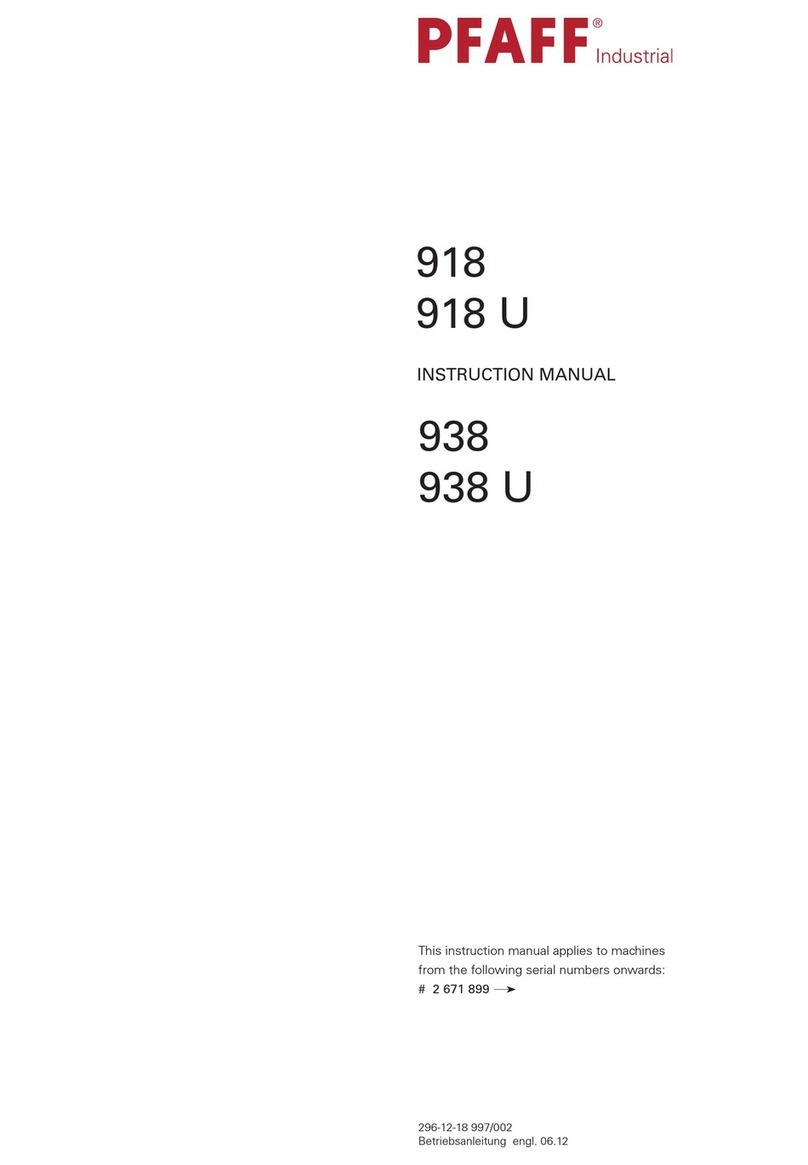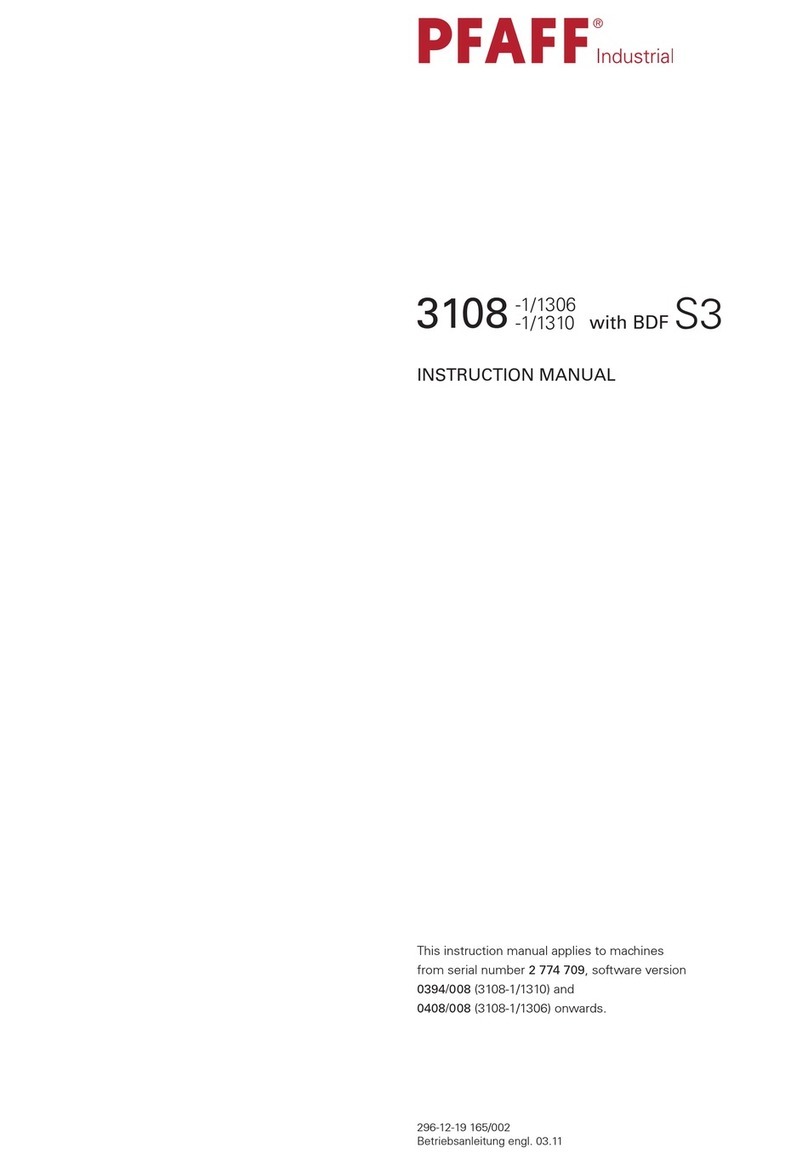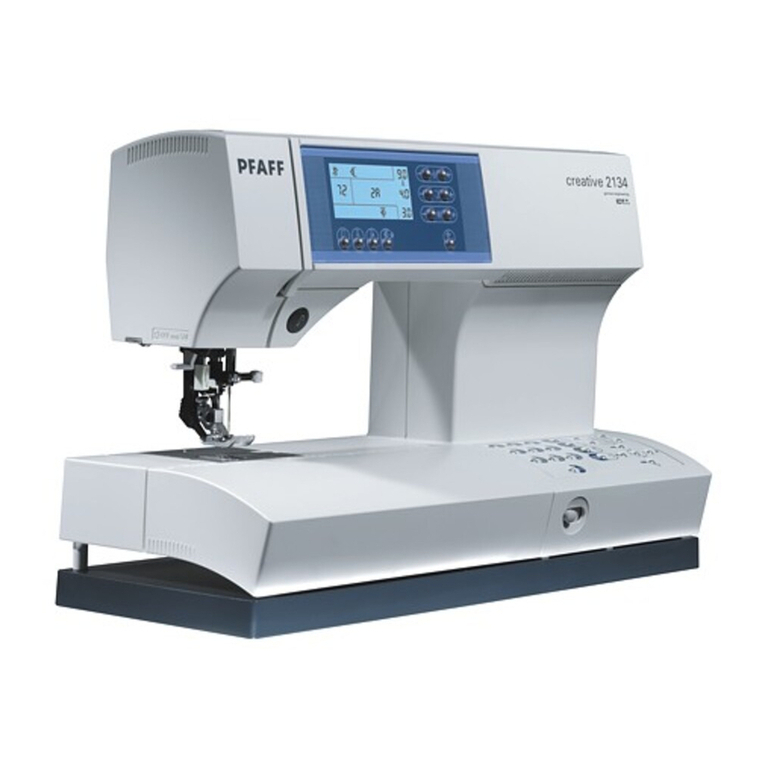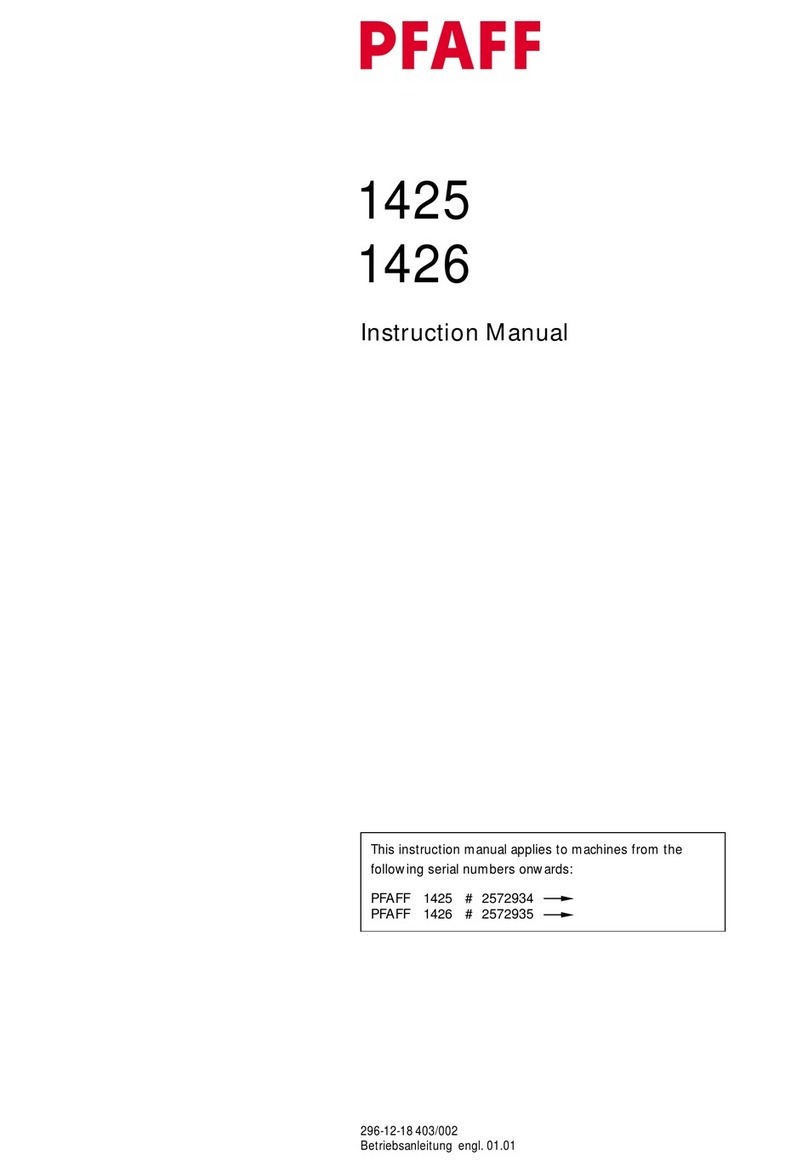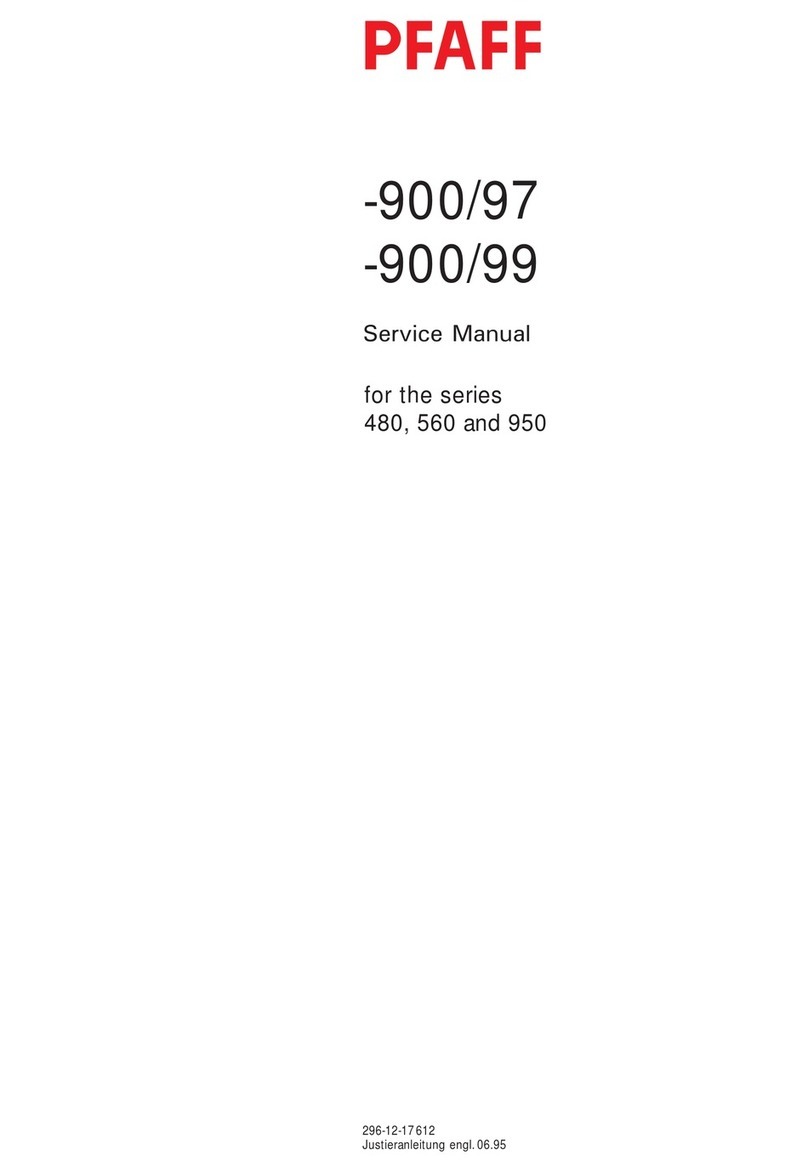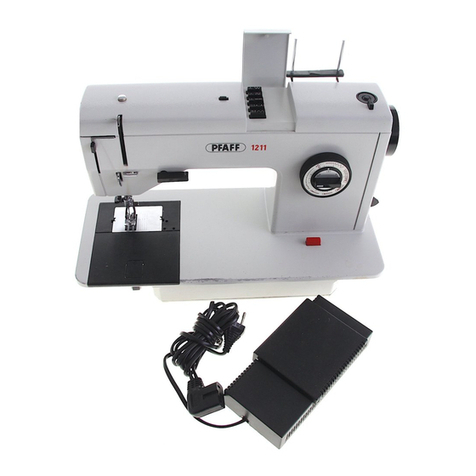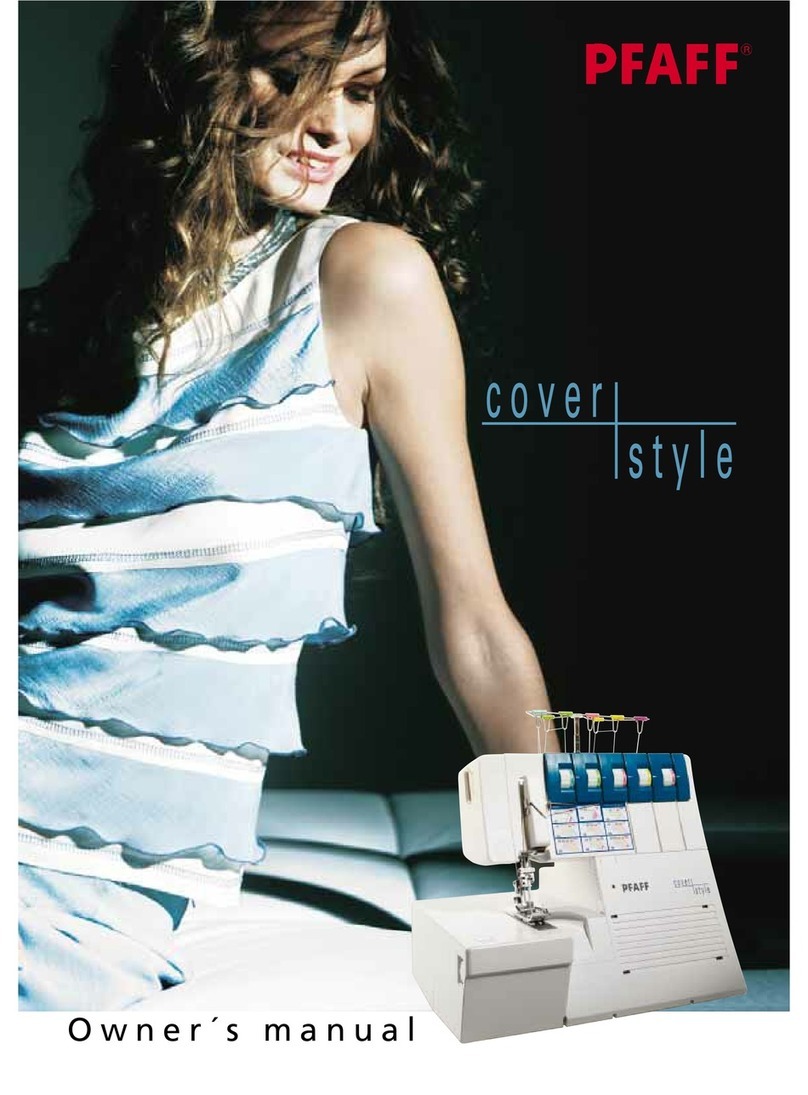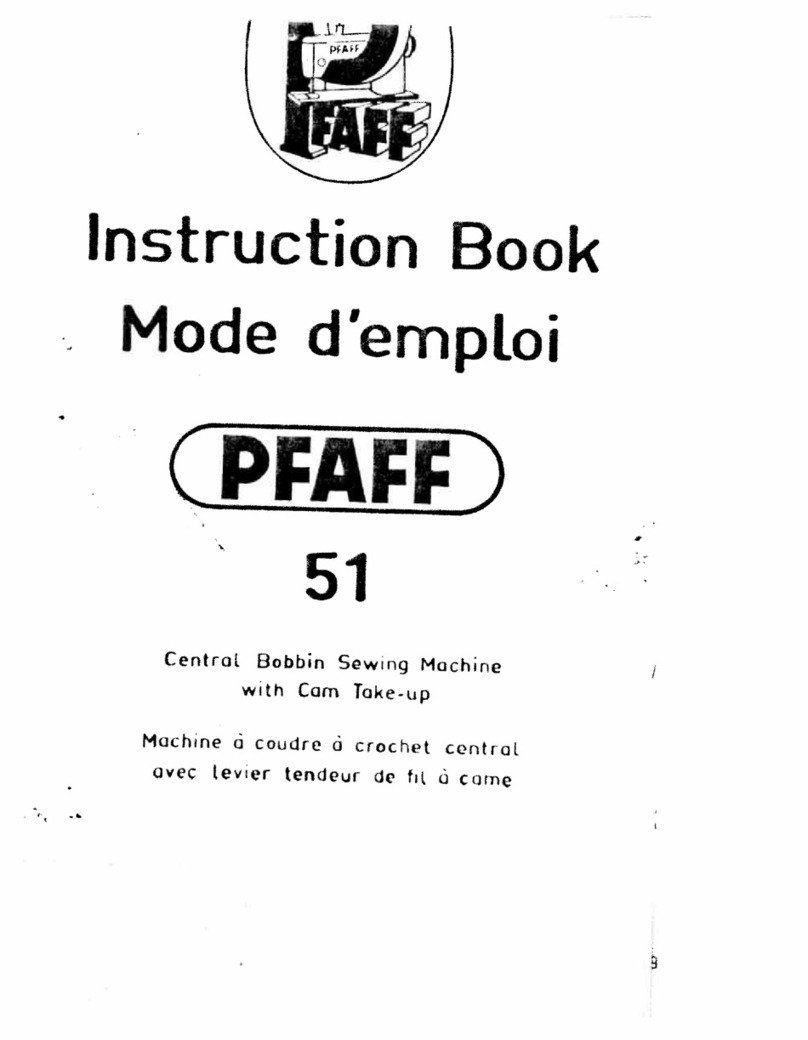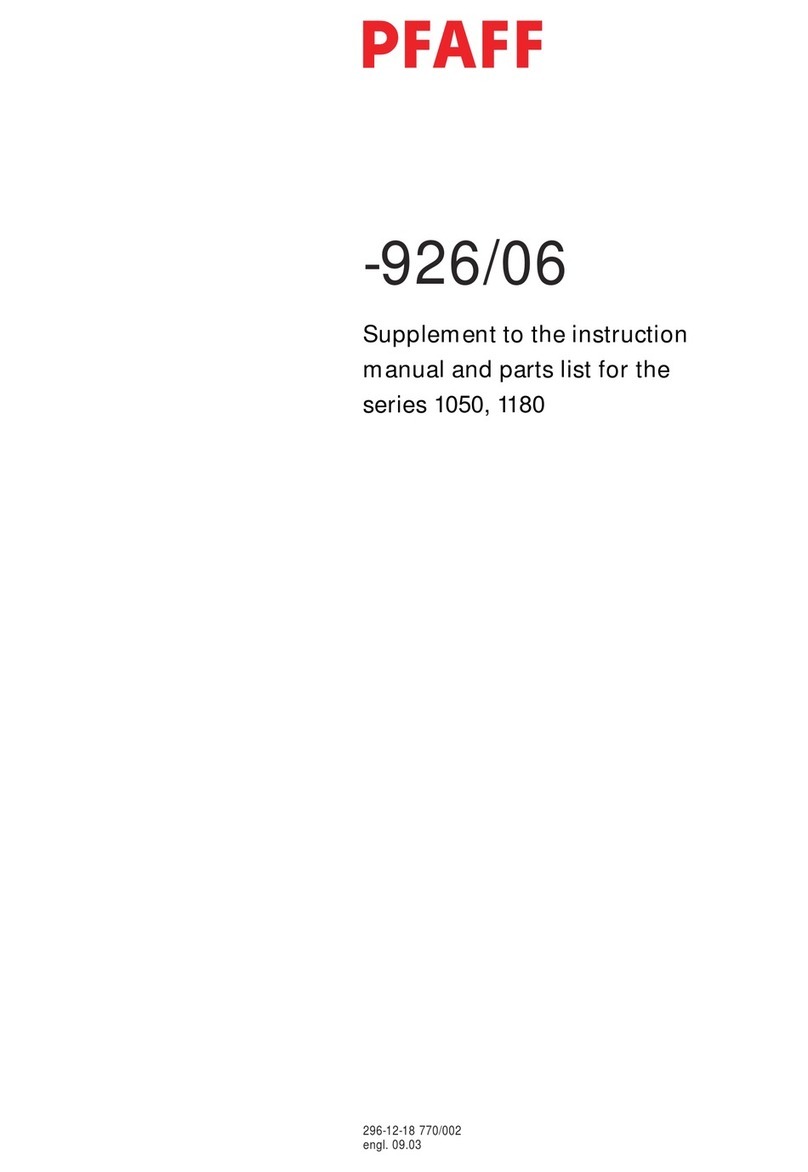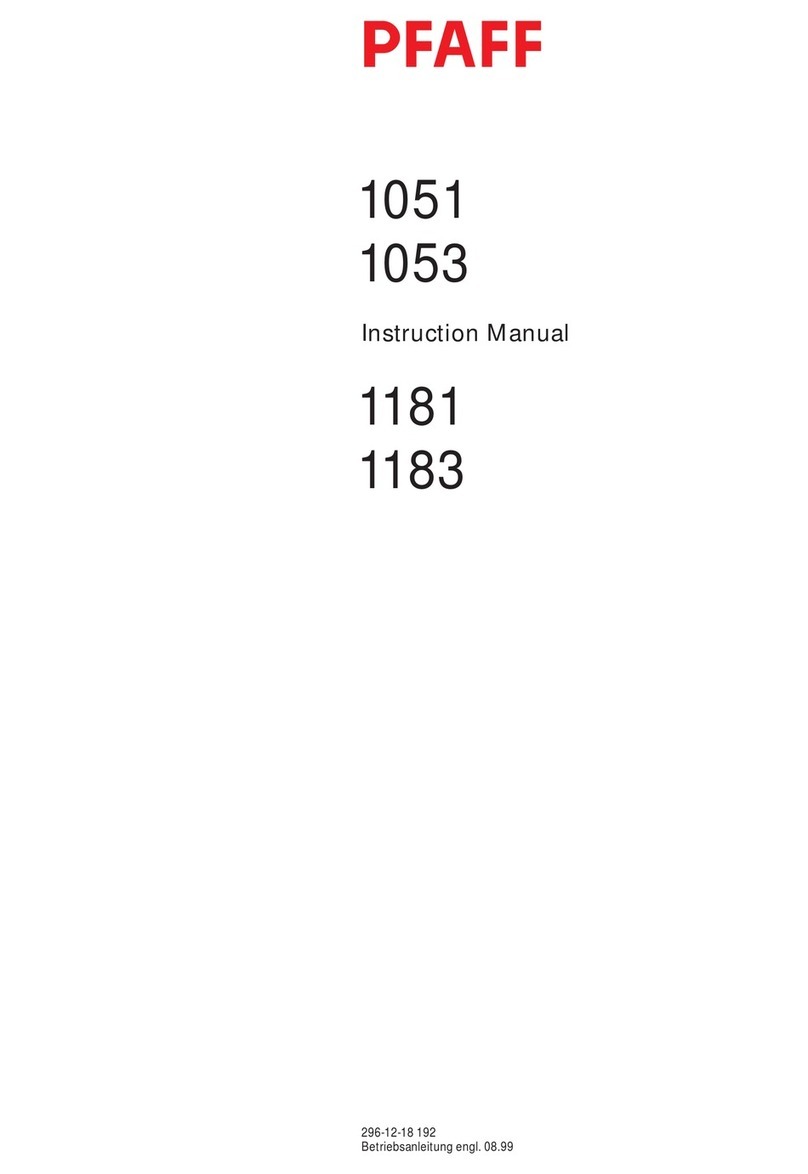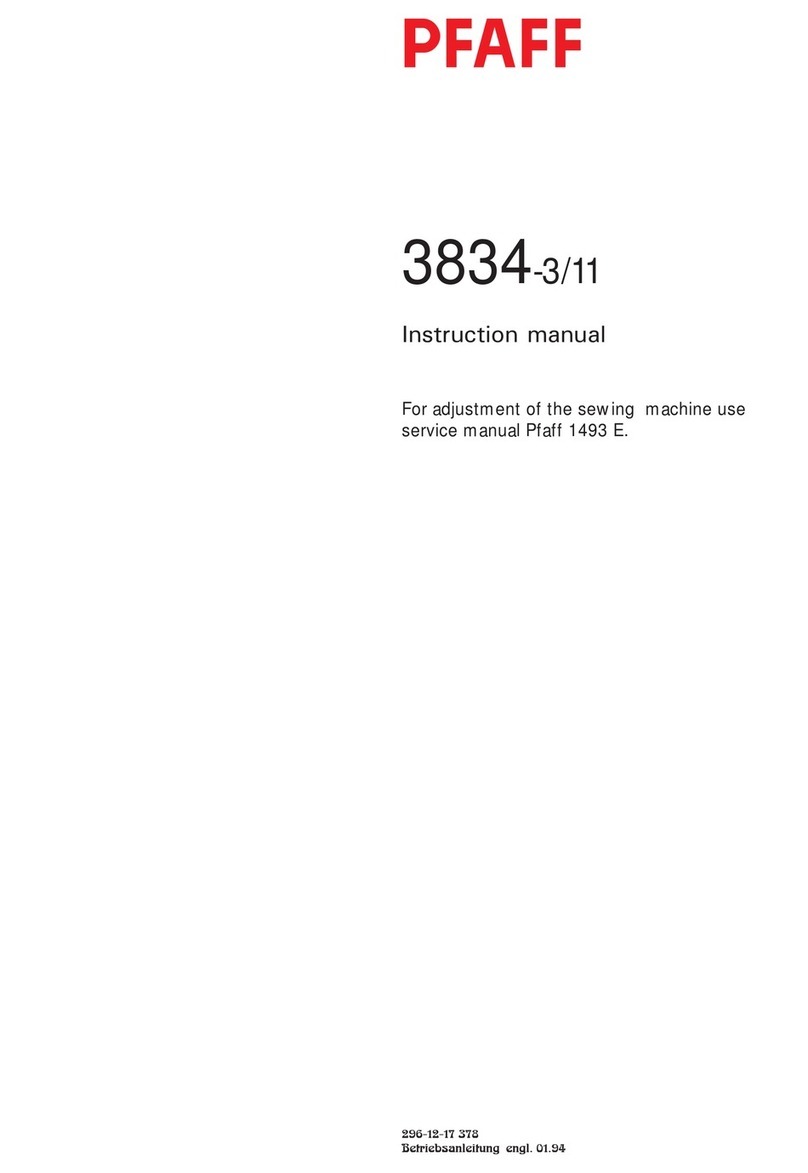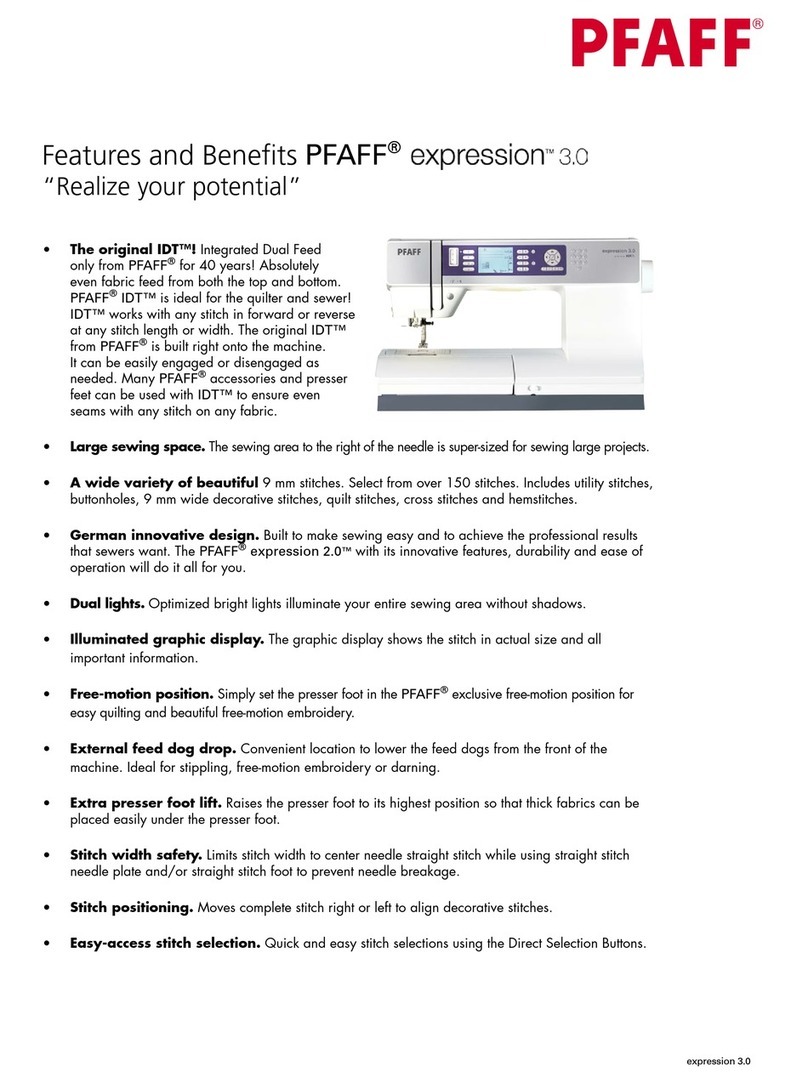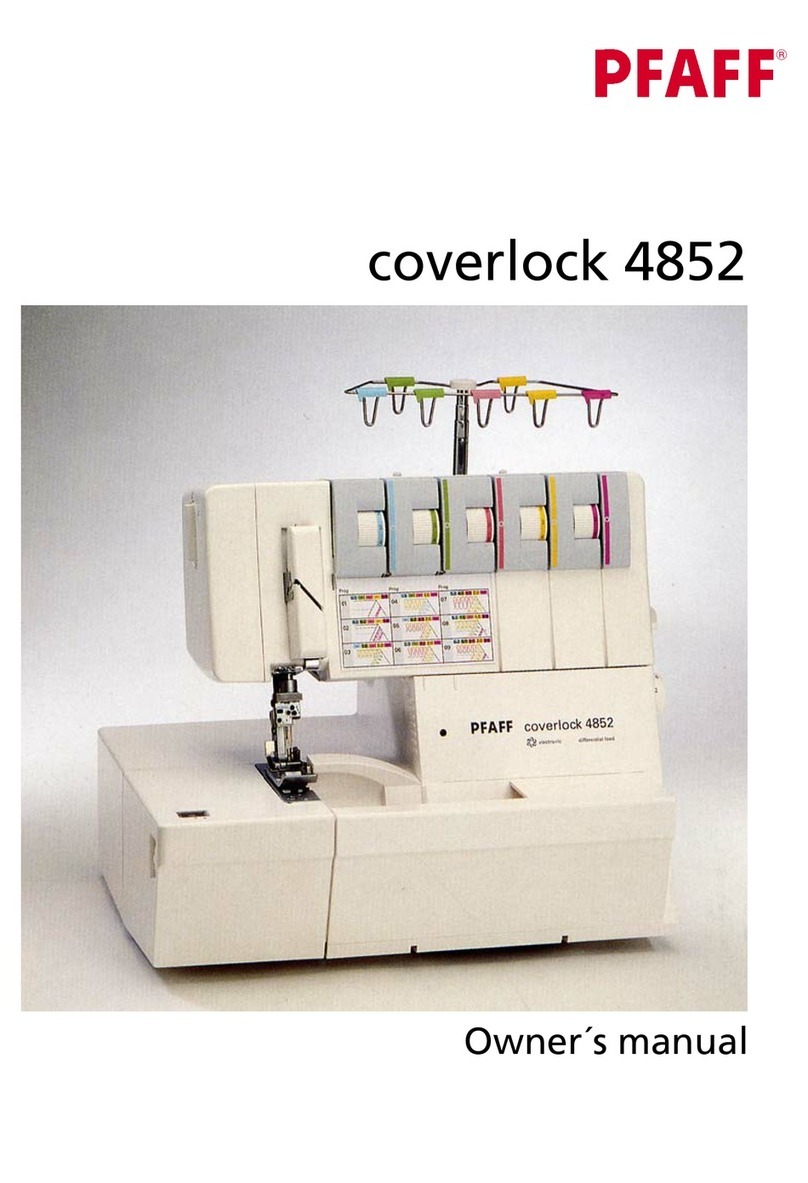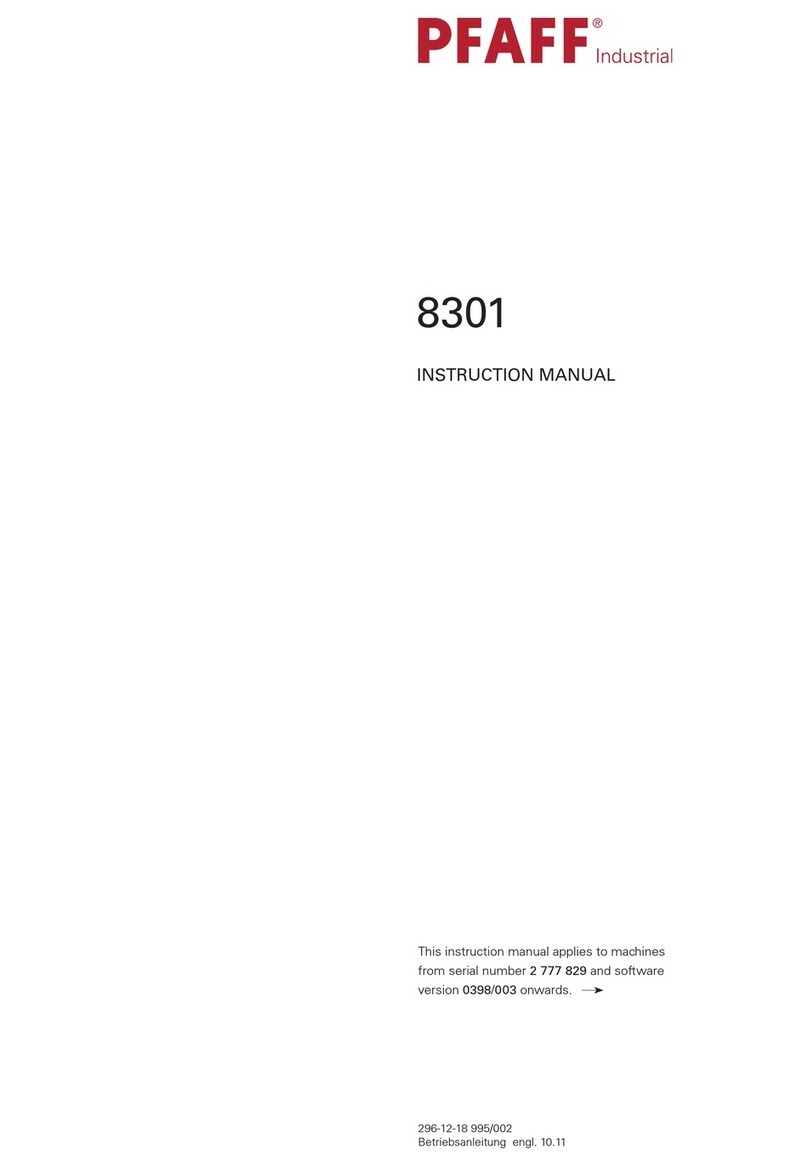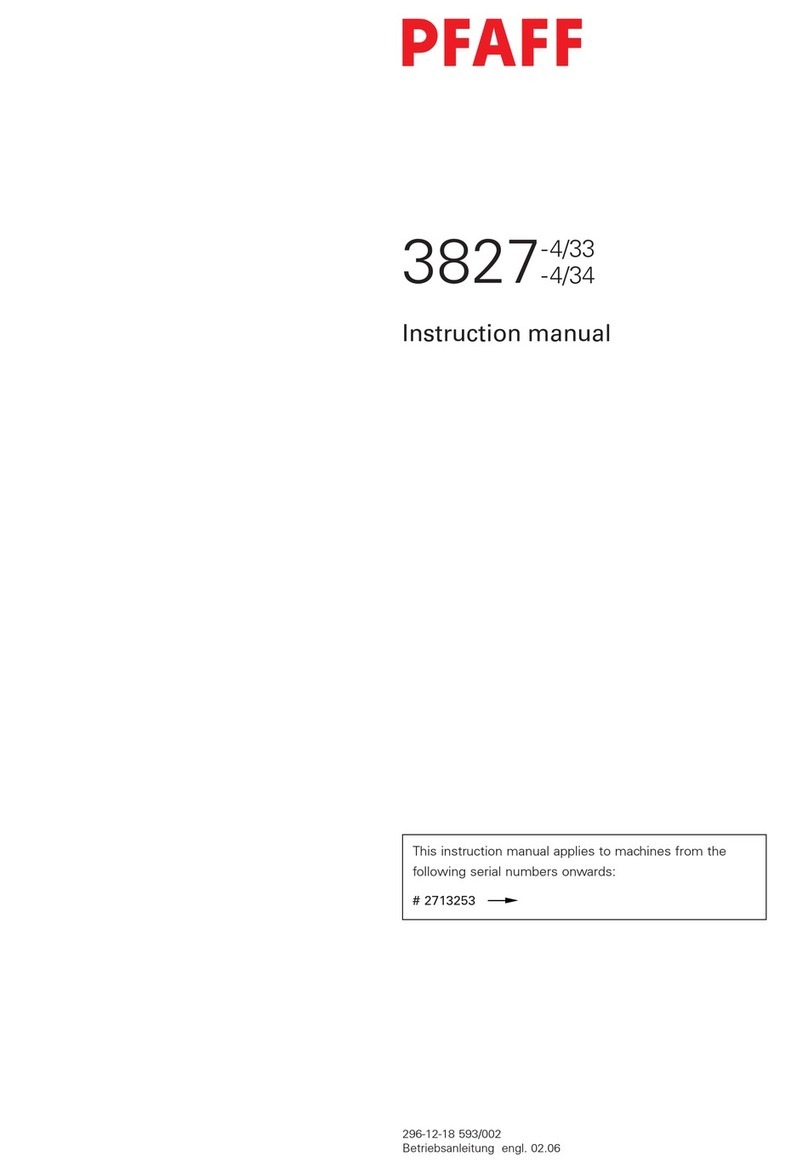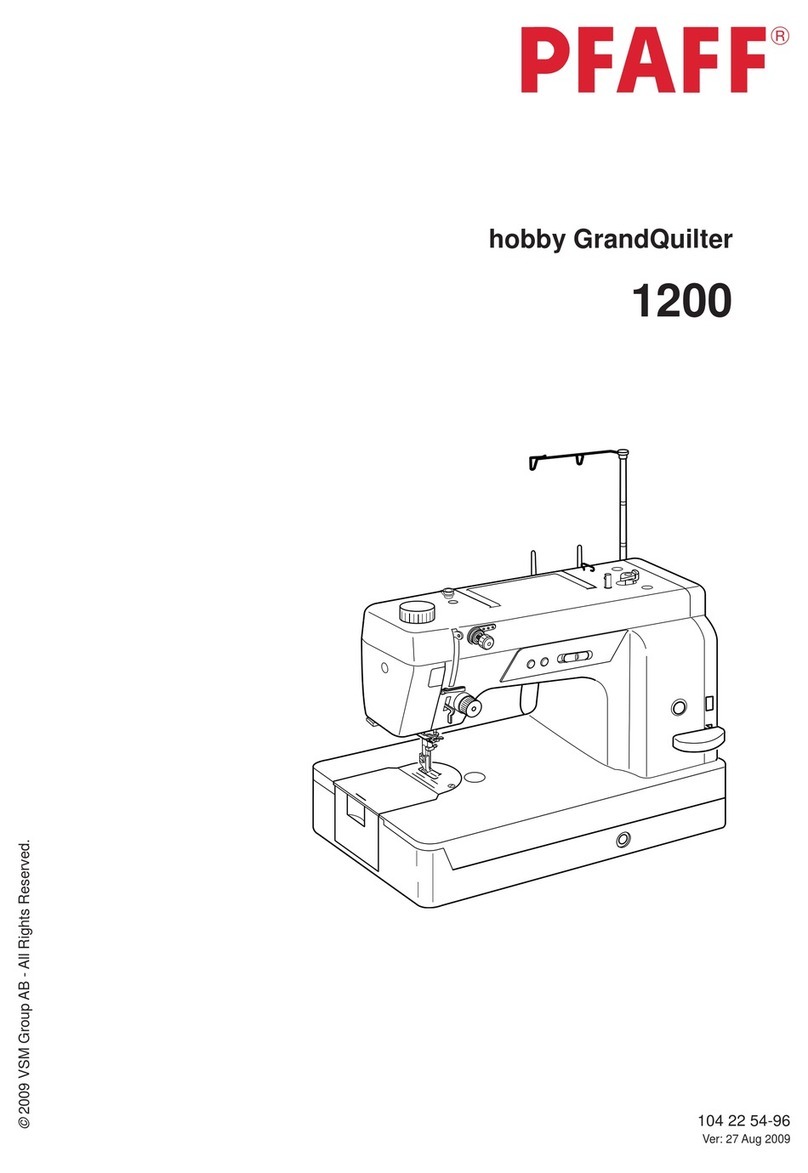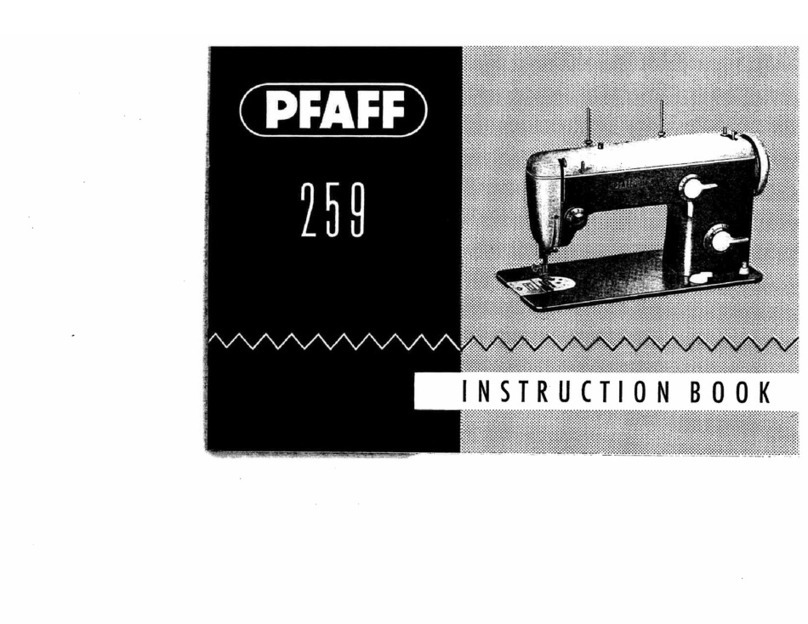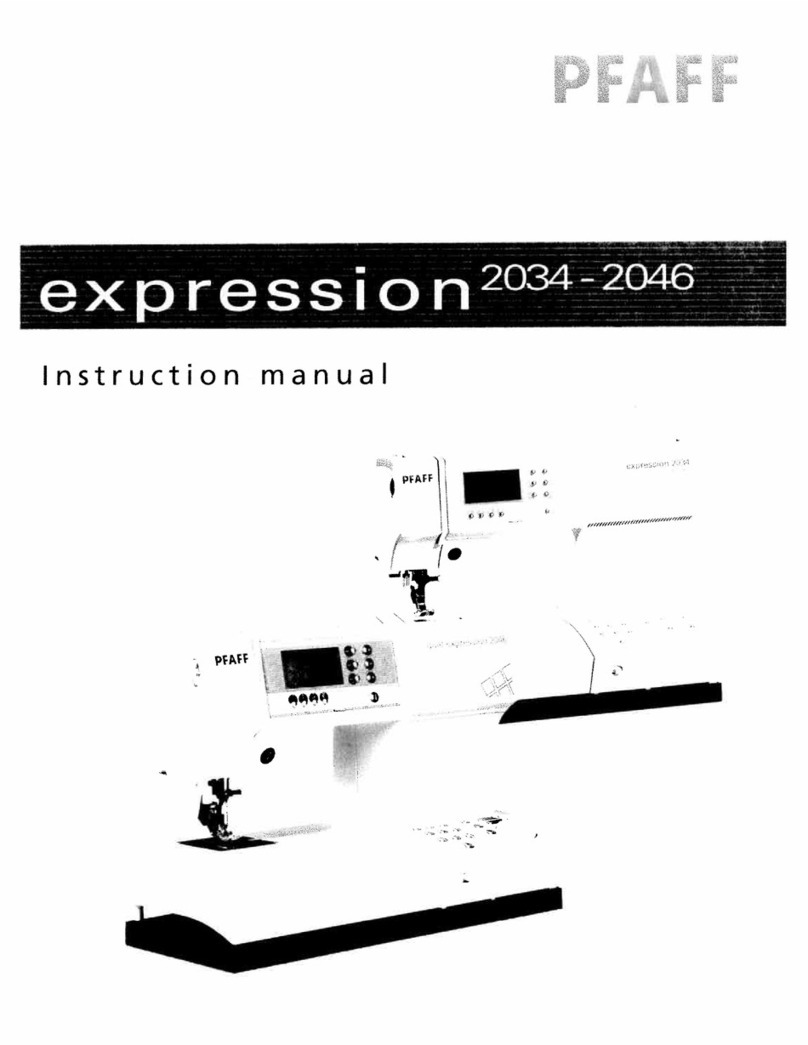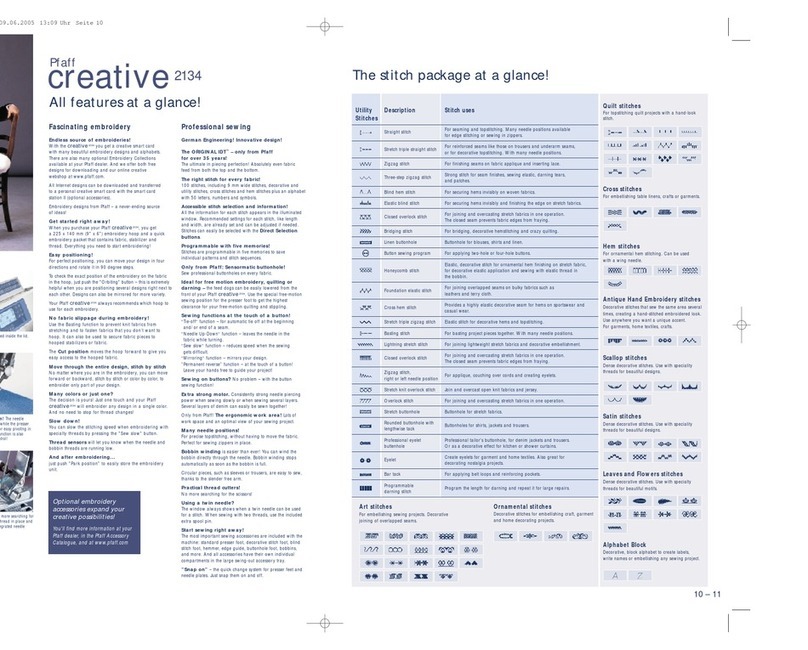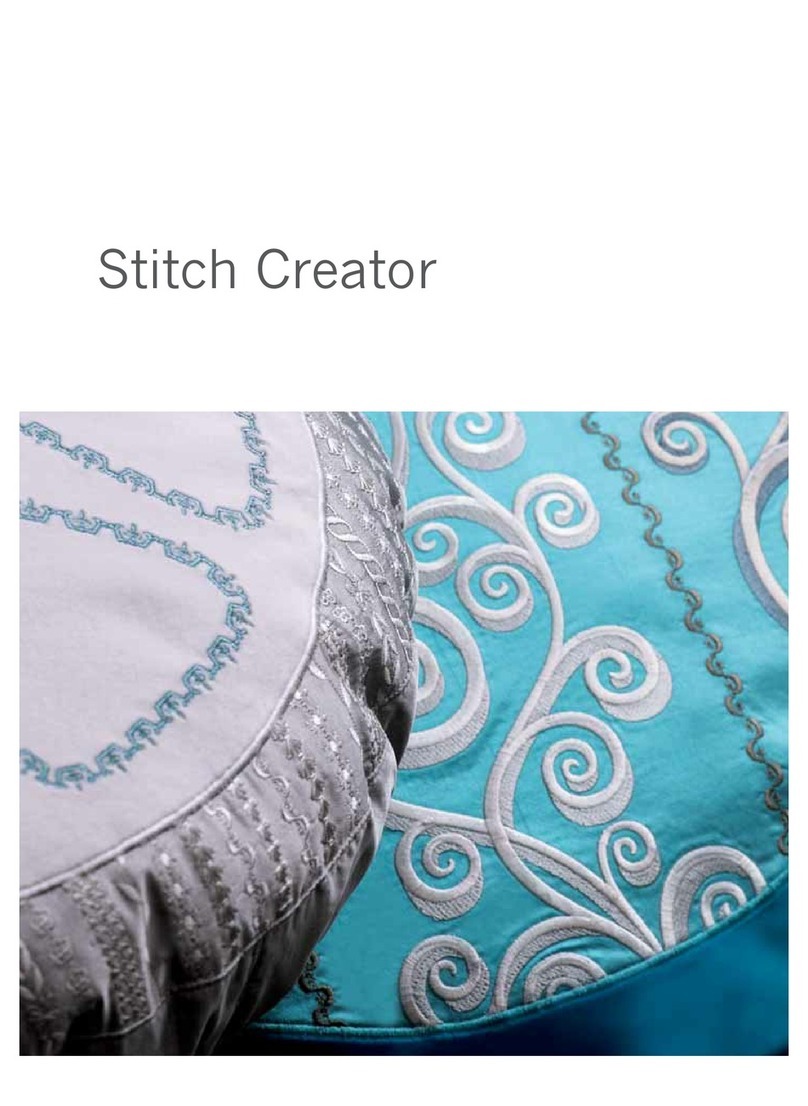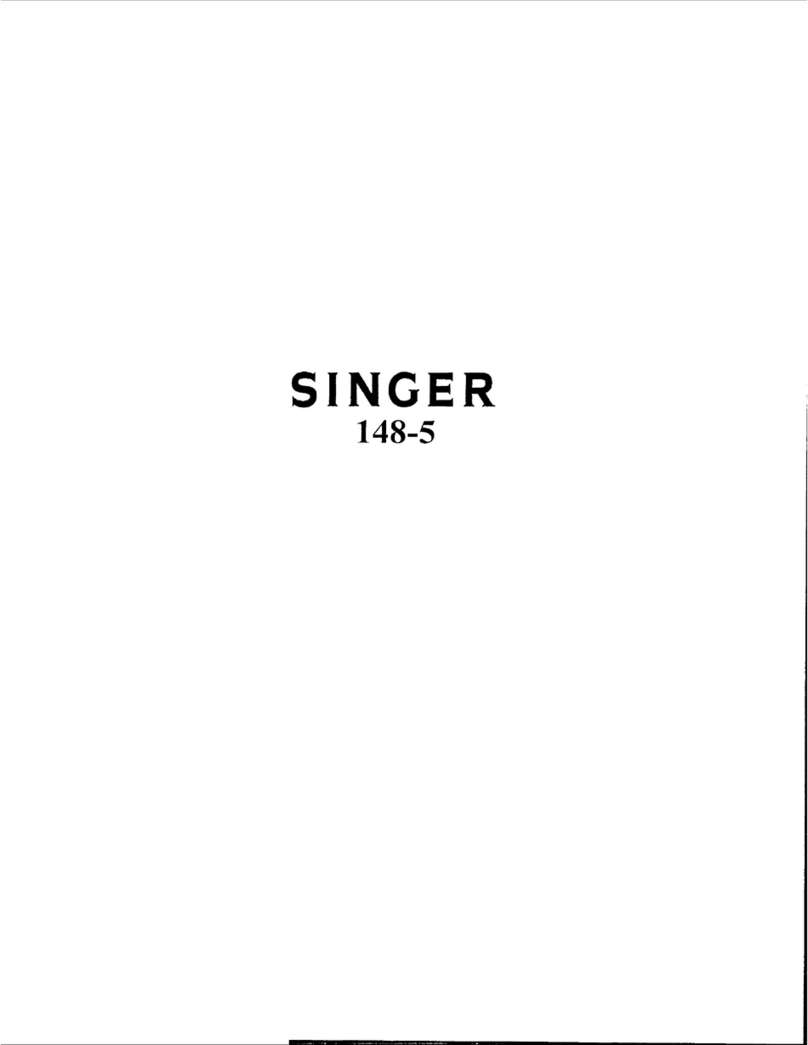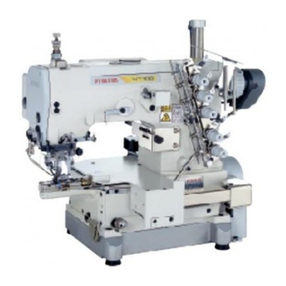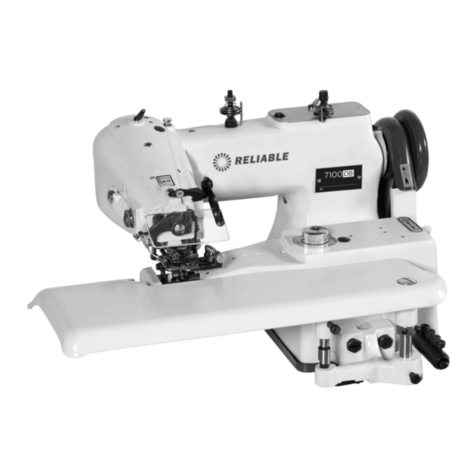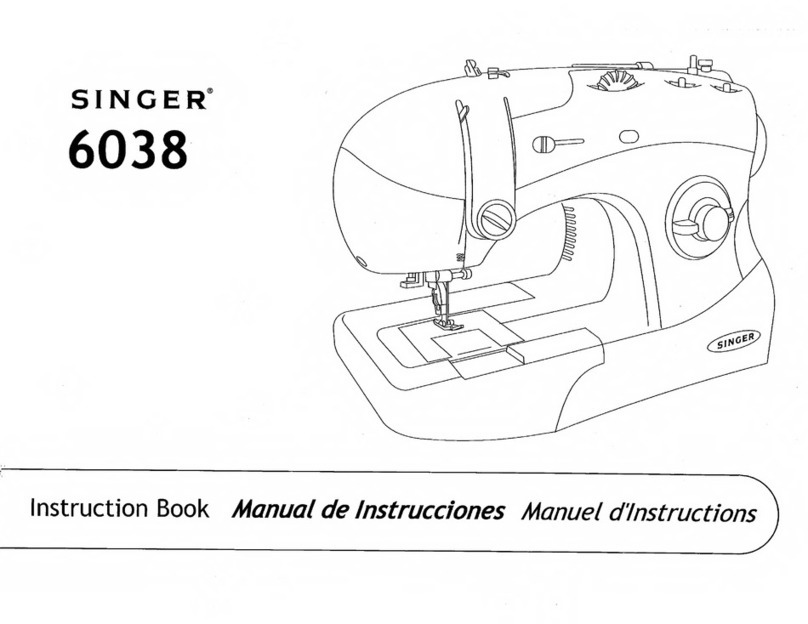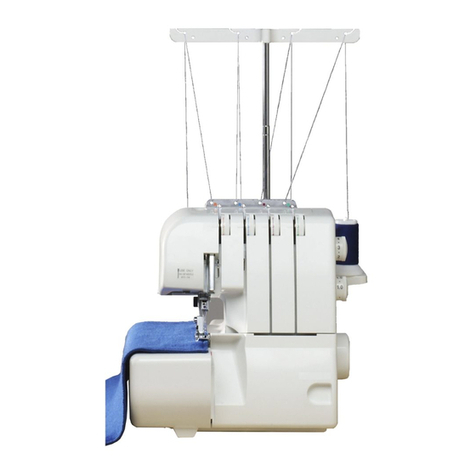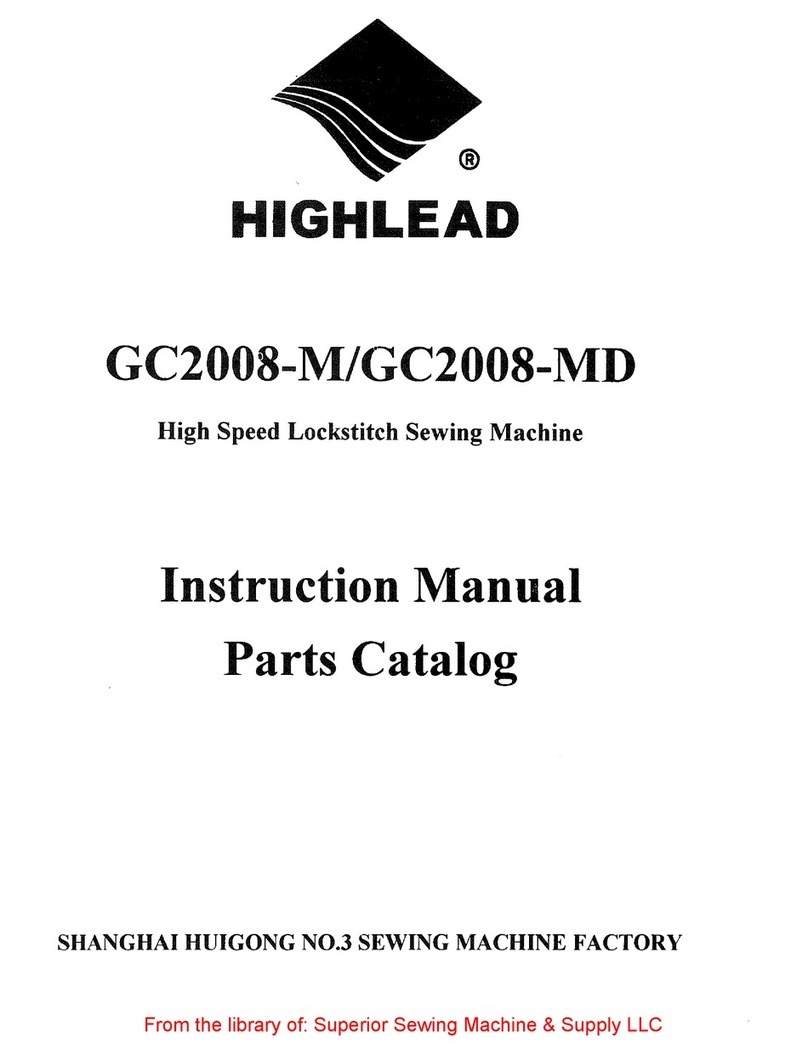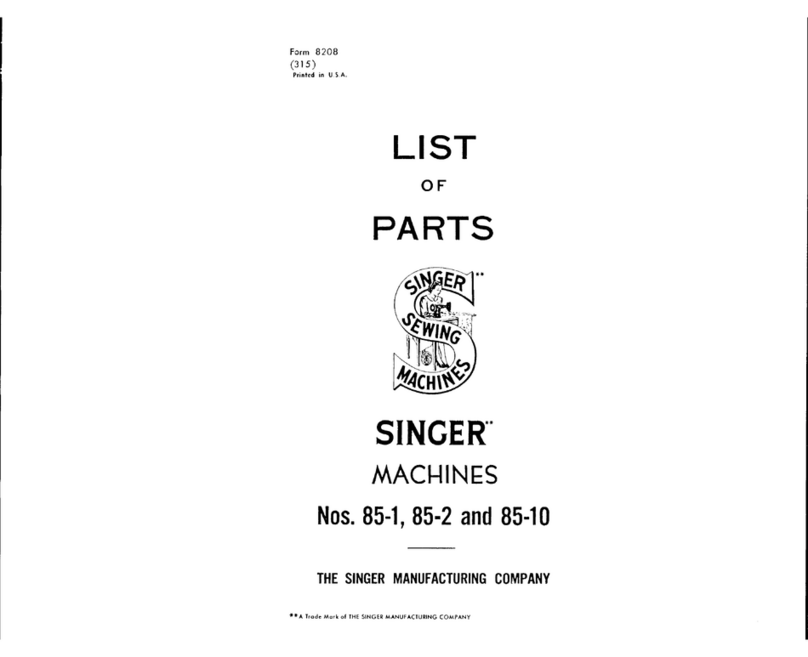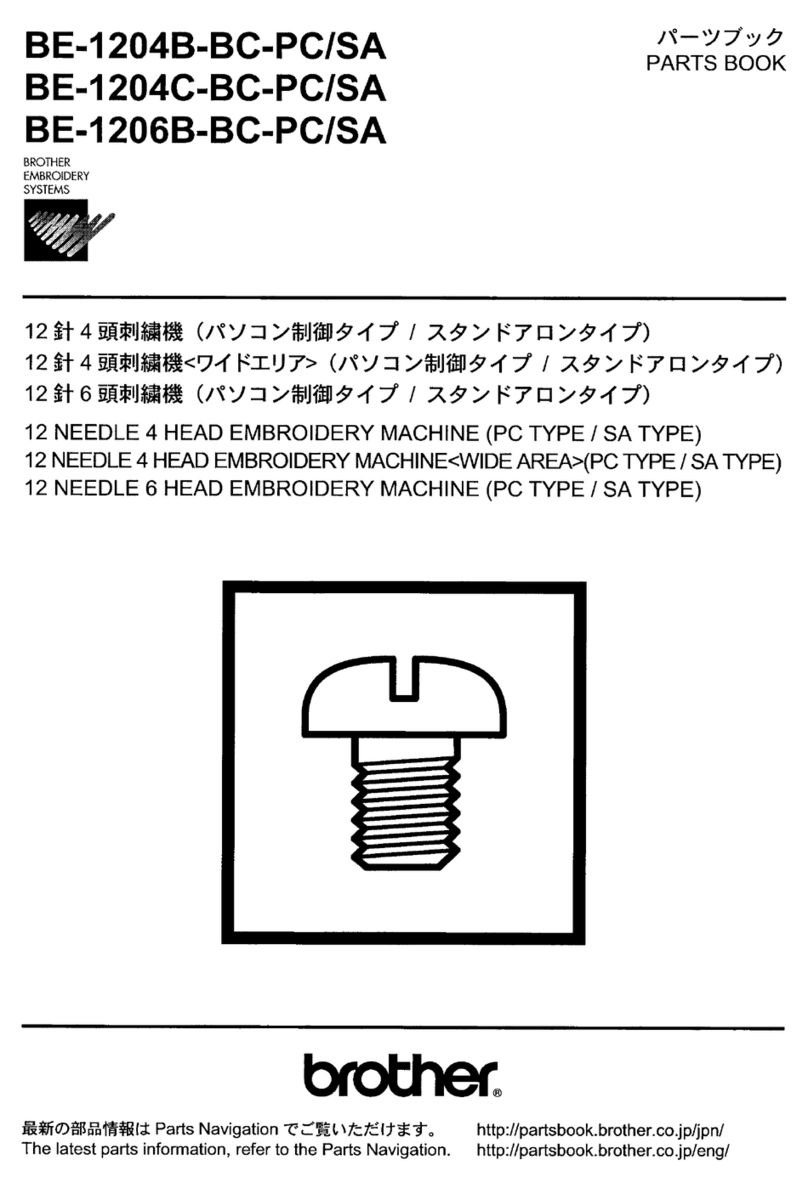Contents
Contents ............................................................................... Chapter - Page
9Preparation ............................................................................................................... 9 - 1
9.01 Inserting the needle ................................................................................................... 9 - 1
9.02 Winding the bobbin thread, adjusting the thread tension ........................................... 9 - 2
9.03 Removing / Inserting the bobbin case ........................................................................ 9 - 3
9.04 Threading the bobbin case / Adjusting the bobbin thread tension .............................. 9 - 4
9.05 Threading the needle thread / adjusting the needle thread tension ............................ 9 - 5
9.06 Setting the stitch length / fullness .............................................................................. 9 - 6
9.06.01 Entering the standard stitch length / fullness ............................................................. 9 - 6
9.06.02 Entering a second stitch length / fullness ................................................................... 9 - 6
9.06.03 Entering the fullness range for pedal adjustment ....................................................... 9 - 7
9.07 Entering / adjusting the code number. ....................................................................... 9 - 8
10 Sewing .................................................................................................................... 10 - 1
10.01 Applying fullness ...................................................................................................... 10 - 1
11 Care and maintenance ........................................................................................... 11 - 1
11.01 Cleaning ................................................................................................................... 11- 1
11.02 Lubricating the hook ................................................................................................. 11 - 2
11.03 Filling the oil reservoir .............................................................................................. 11 - 2
11.04 Lubricating the bevel gears ...................................................................................... 11 - 3
12 Adjustment ............................................................................................................. 12 - 1
12.01 Notes on adjusting ................................................................................................... 12 - 1
12.02 Tools, gauges and other accessories for adjusting ................................................... 12 - 1
12.03 Abbreviations ........................................................................................................... 12 - 1
12.04 Adjusting the basic machine ................................................................................. 12 - 2
12.04.01 Adjusting the synchronizer ....................................................................................... 12 - 2
12.04.02 Positioning the needle in the direction of sewing ..................................................... 12 - 3
12.04.03 Positioning the needle across the direction of sewing ............................................. 12 - 4
12.04.04 Preadjusting the needle height ................................................................................. 12 - 5
12.04.05 Needle rise, hook-to-needle clearance, needle height and needle guard .................. 12 - 6
12.04.06 Bobbin case opener height ....................................................................................... 12 - 8
12.04.07 Bobbin case opener stroke ...................................................................................... 12 - 9
12.04.08 Feed wheel height ................................................................................................... 12 - 10
12.04.09 Clearance between the roller presser or band feed and the feed wheel .................. 12 - 11
12.04.10 Roller presser ( 3734-2/01 ) ...................................................................................... 12 -12
12.04.11 Band feed ( 3734-2/21) ............................................................................................. 12 - 13
12.04.12 Changing the band ( 3734-4/21)................................................................................ 12 - 14
12.04.13 Automatic presser-foot lifter .................................................................................... 12 - 15
12.04.14 Retainer ................................................................................................................... 12 - 16
12.04.15 Tension release ........................................................................................................ 12 -17
12.04.16 Thread check spring ................................................................................................. 12 - 18
12.04.17 Bobbin winder .......................................................................................................... 12 -19
12.04.18 Roller presser pressure ............................................................................................ 12 - 20
12.04.19 Locking the set-value transmitter ............................................................................. 12 - 21
